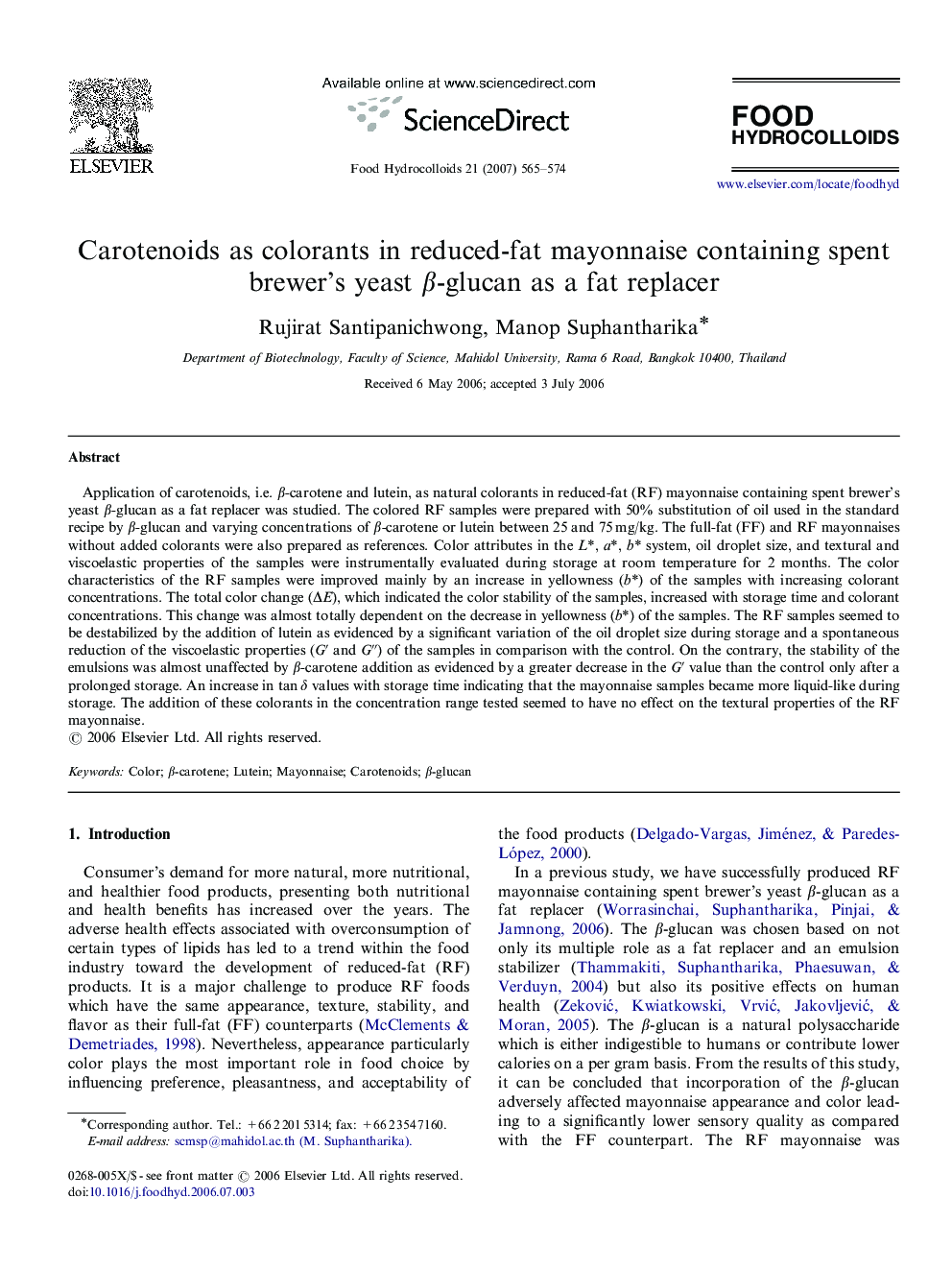| Article ID | Journal | Published Year | Pages | File Type |
|---|---|---|---|---|
| 605620 | Food Hydrocolloids | 2007 | 10 Pages |
Application of carotenoids, i.e. β-carotene and lutein, as natural colorants in reduced-fat (RF) mayonnaise containing spent brewer's yeast β-glucan as a fat replacer was studied. The colored RF samples were prepared with 50% substitution of oil used in the standard recipe by β-glucan and varying concentrations of β-carotene or lutein between 25 and 75 mg/kg. The full-fat (FF) and RF mayonnaises without added colorants were also prepared as references. Color attributes in the L*, a*, b* system, oil droplet size, and textural and viscoelastic properties of the samples were instrumentally evaluated during storage at room temperature for 2 months. The color characteristics of the RF samples were improved mainly by an increase in yellowness (b*) of the samples with increasing colorant concentrations. The total color change (ΔE), which indicated the color stability of the samples, increased with storage time and colorant concentrations. This change was almost totally dependent on the decrease in yellowness (b*) of the samples. The RF samples seemed to be destabilized by the addition of lutein as evidenced by a significant variation of the oil droplet size during storage and a spontaneous reduction of the viscoelastic properties (G′ and G″) of the samples in comparison with the control. On the contrary, the stability of the emulsions was almost unaffected by β-carotene addition as evidenced by a greater decrease in the G′ value than the control only after a prolonged storage. An increase in tan δ values with storage time indicating that the mayonnaise samples became more liquid-like during storage. The addition of these colorants in the concentration range tested seemed to have no effect on the textural properties of the RF mayonnaise.
